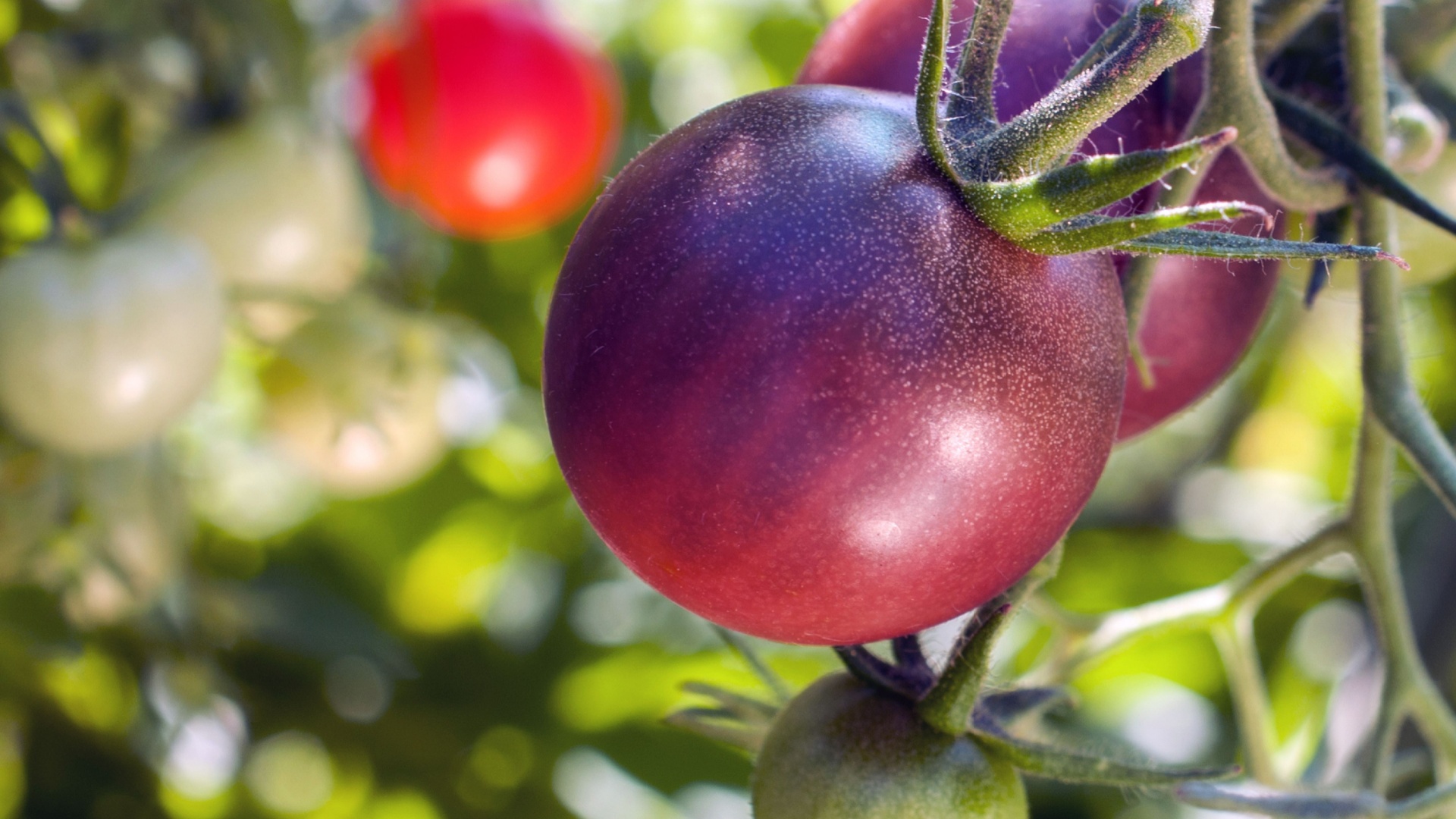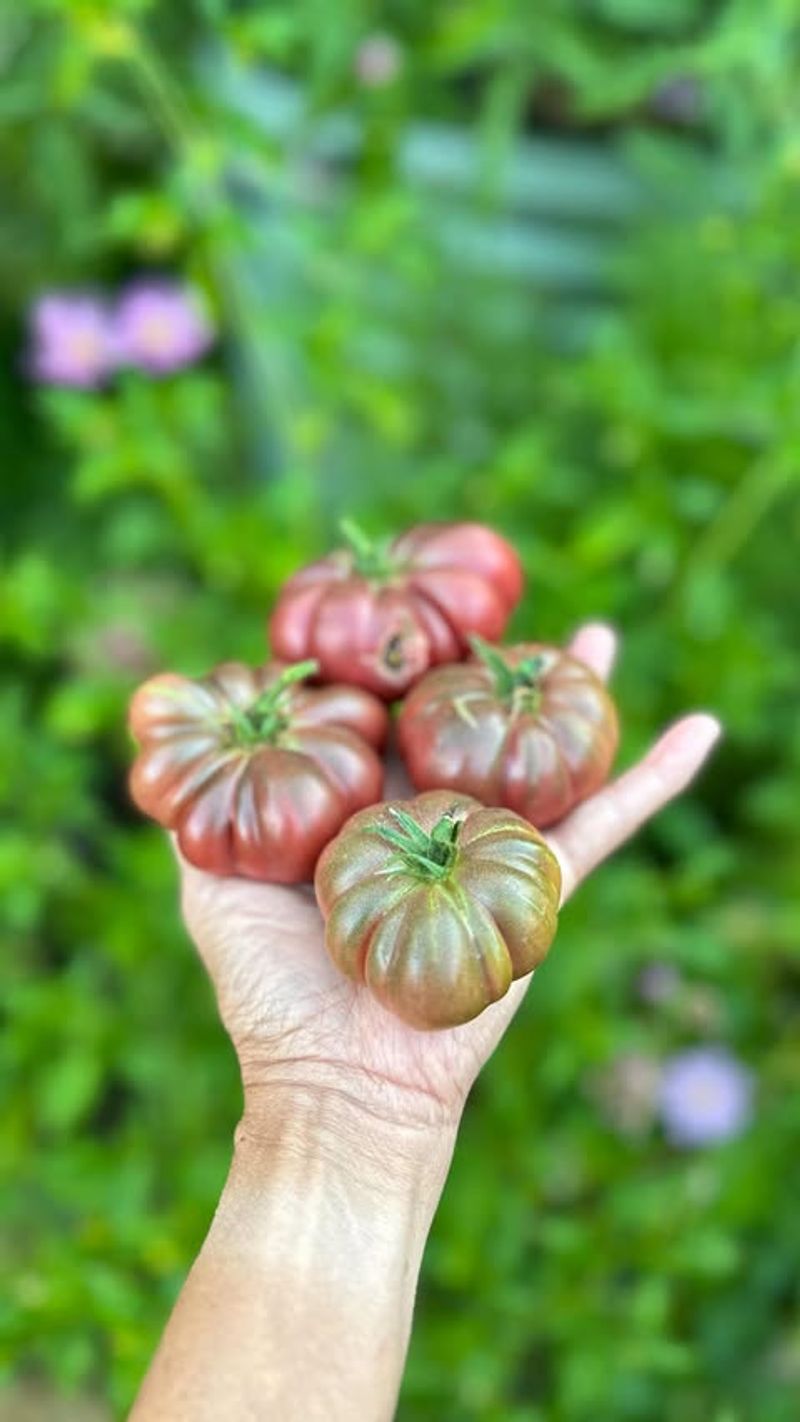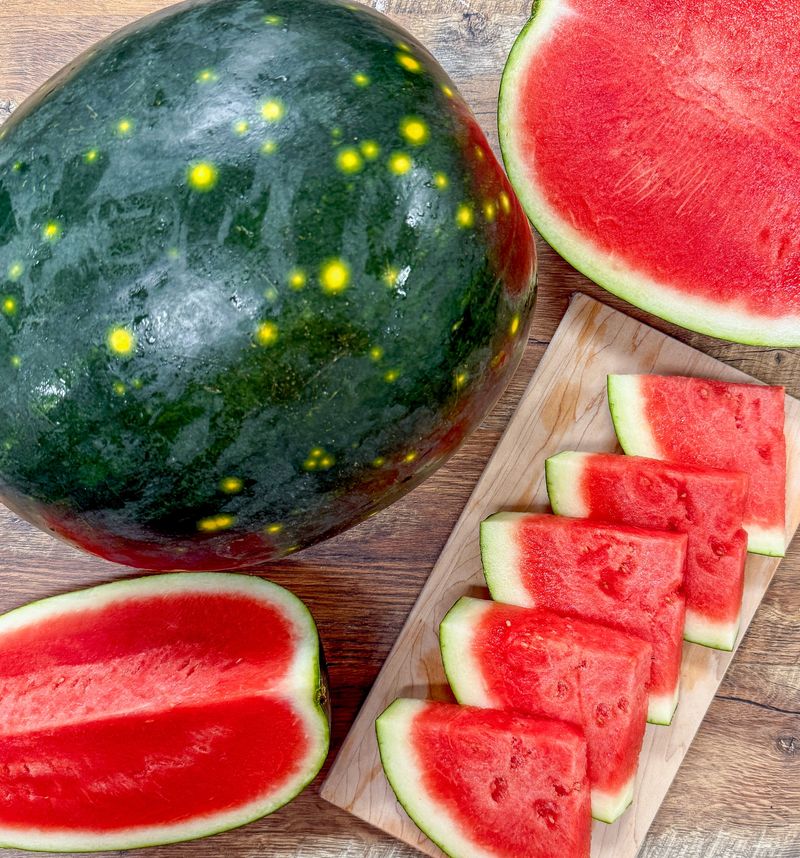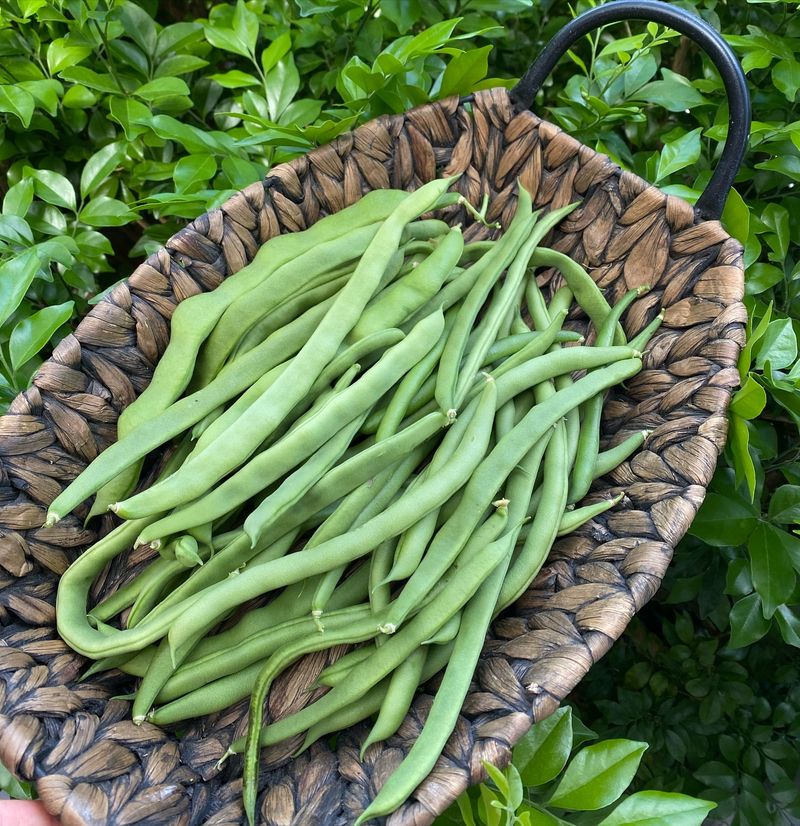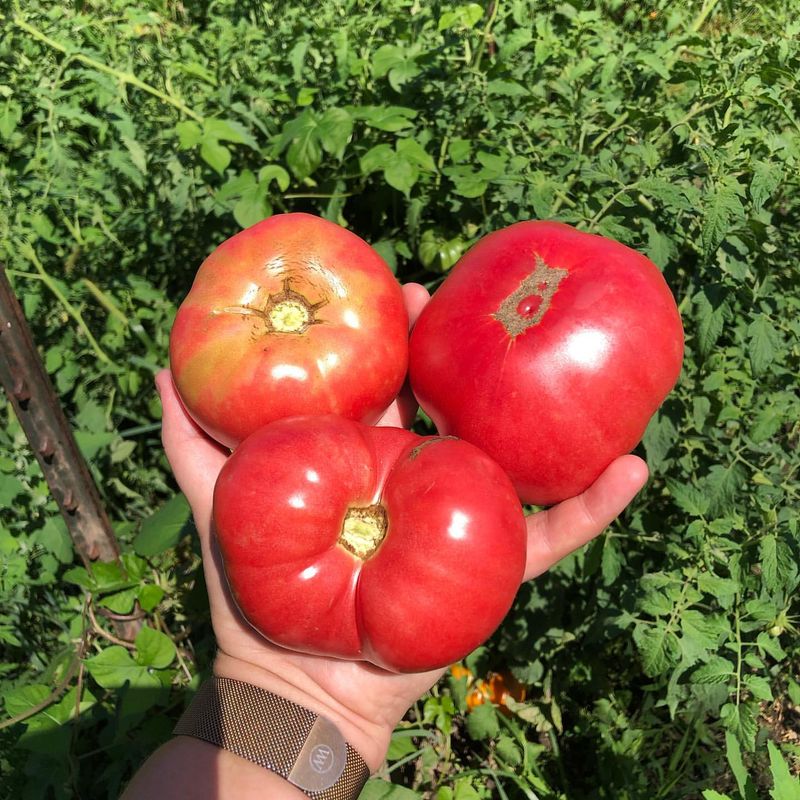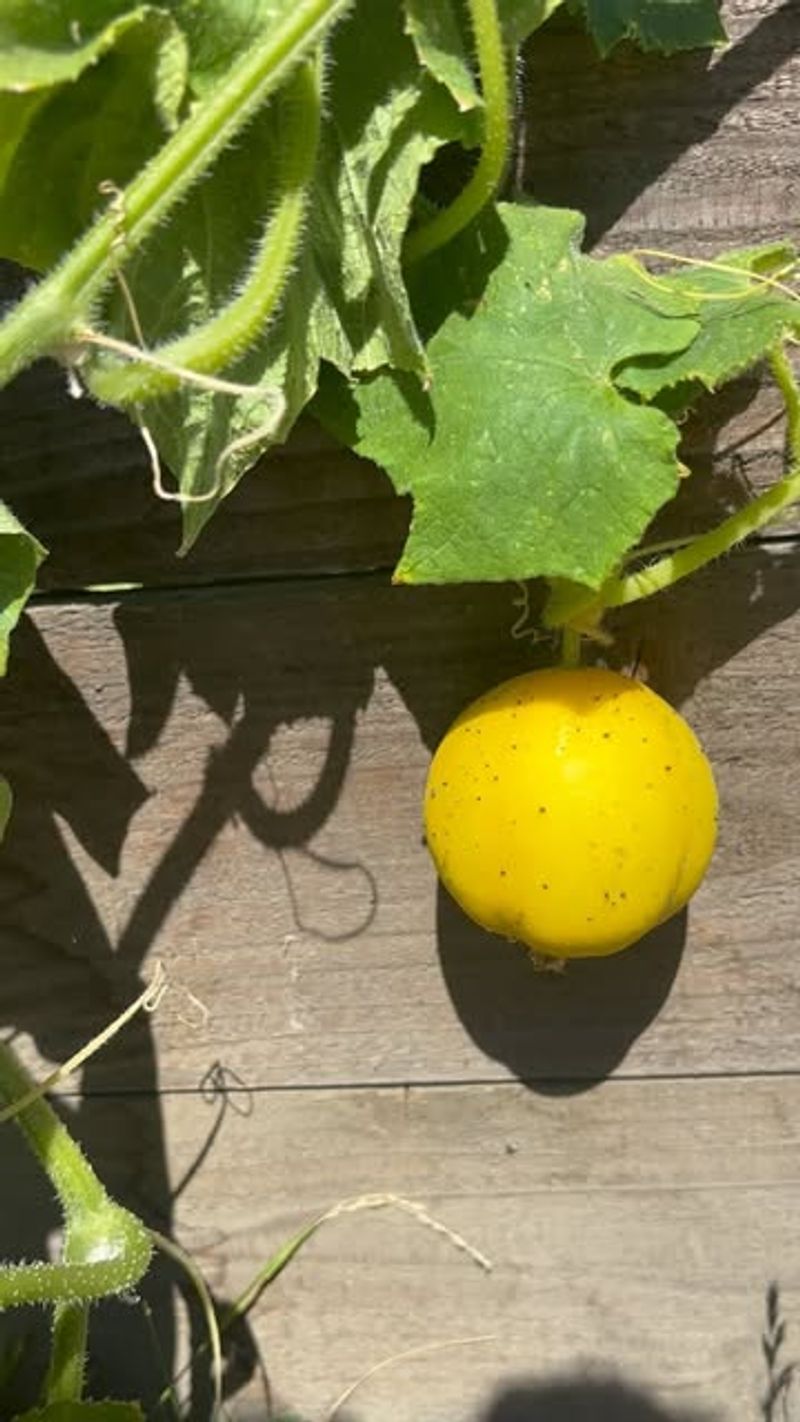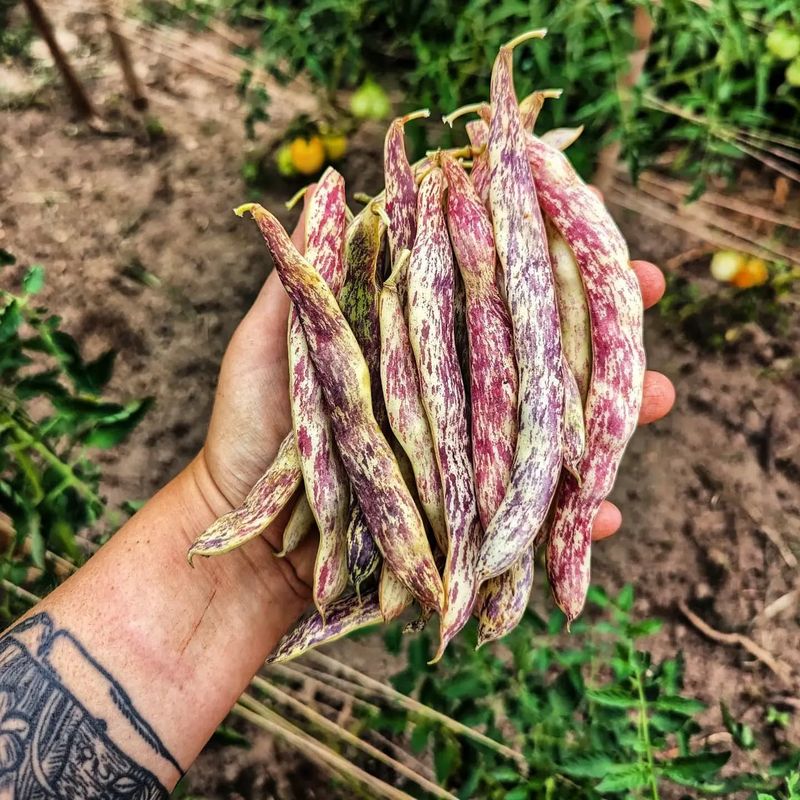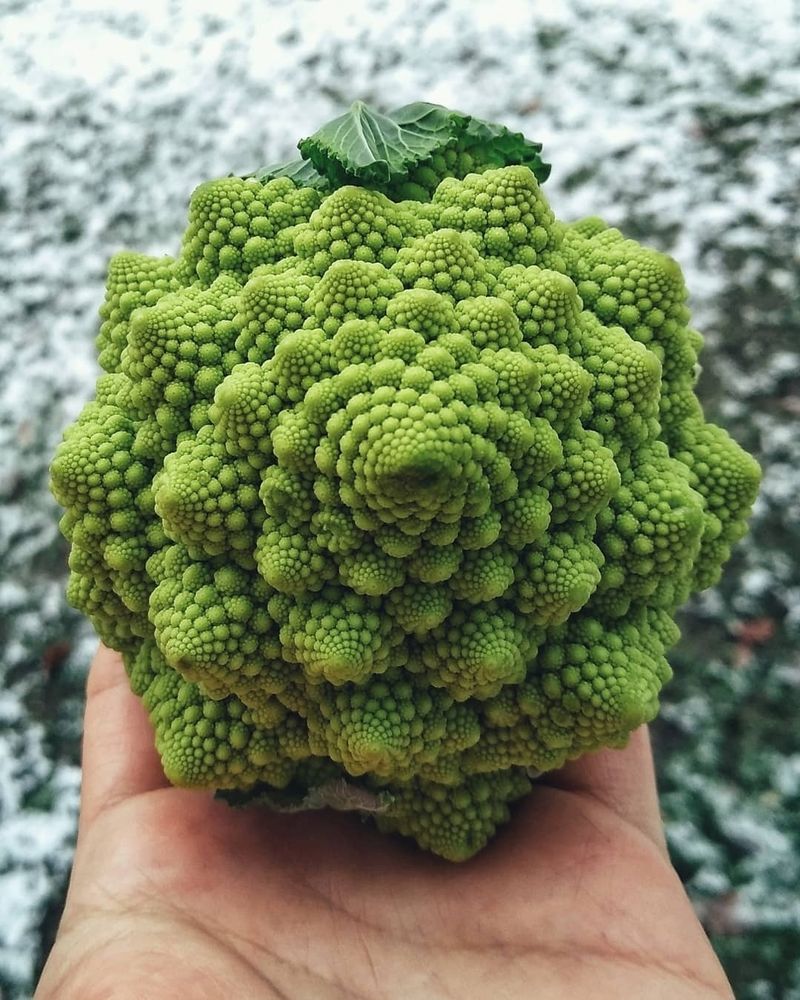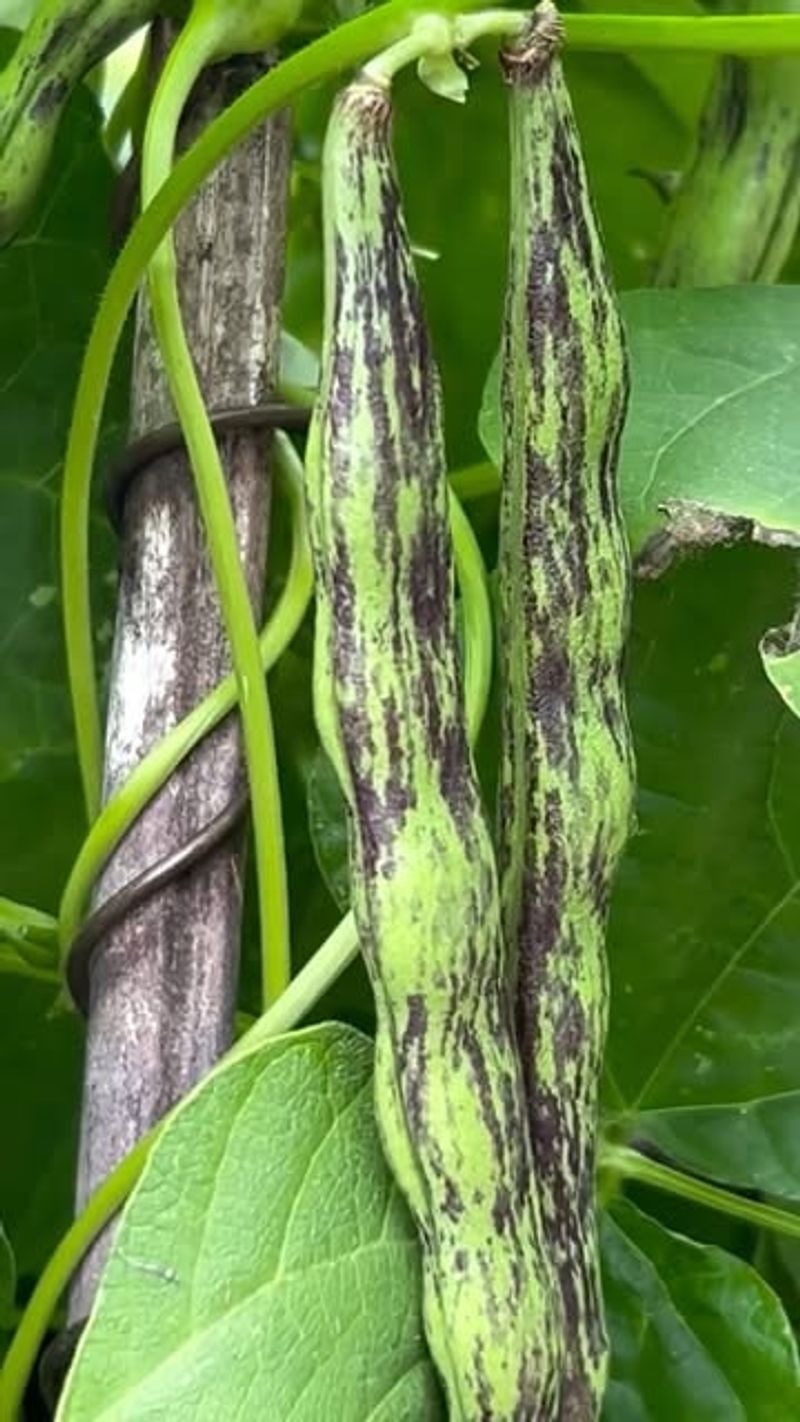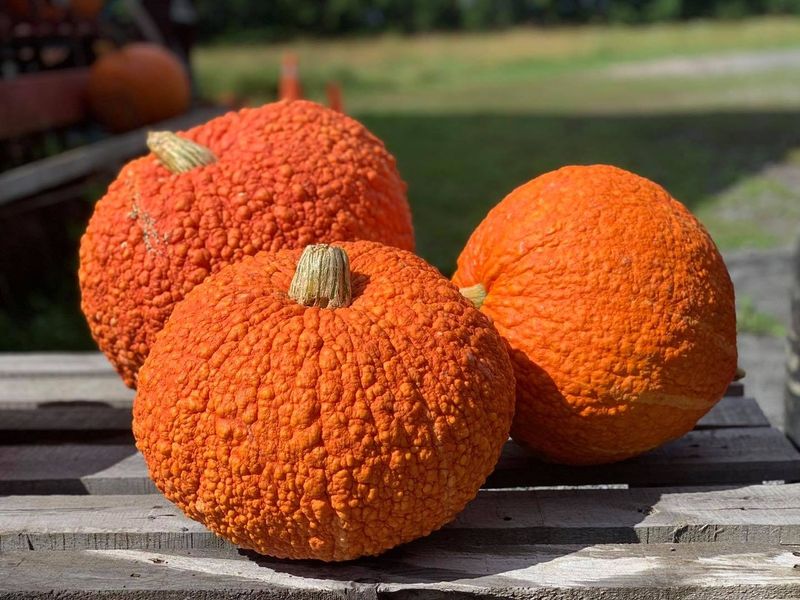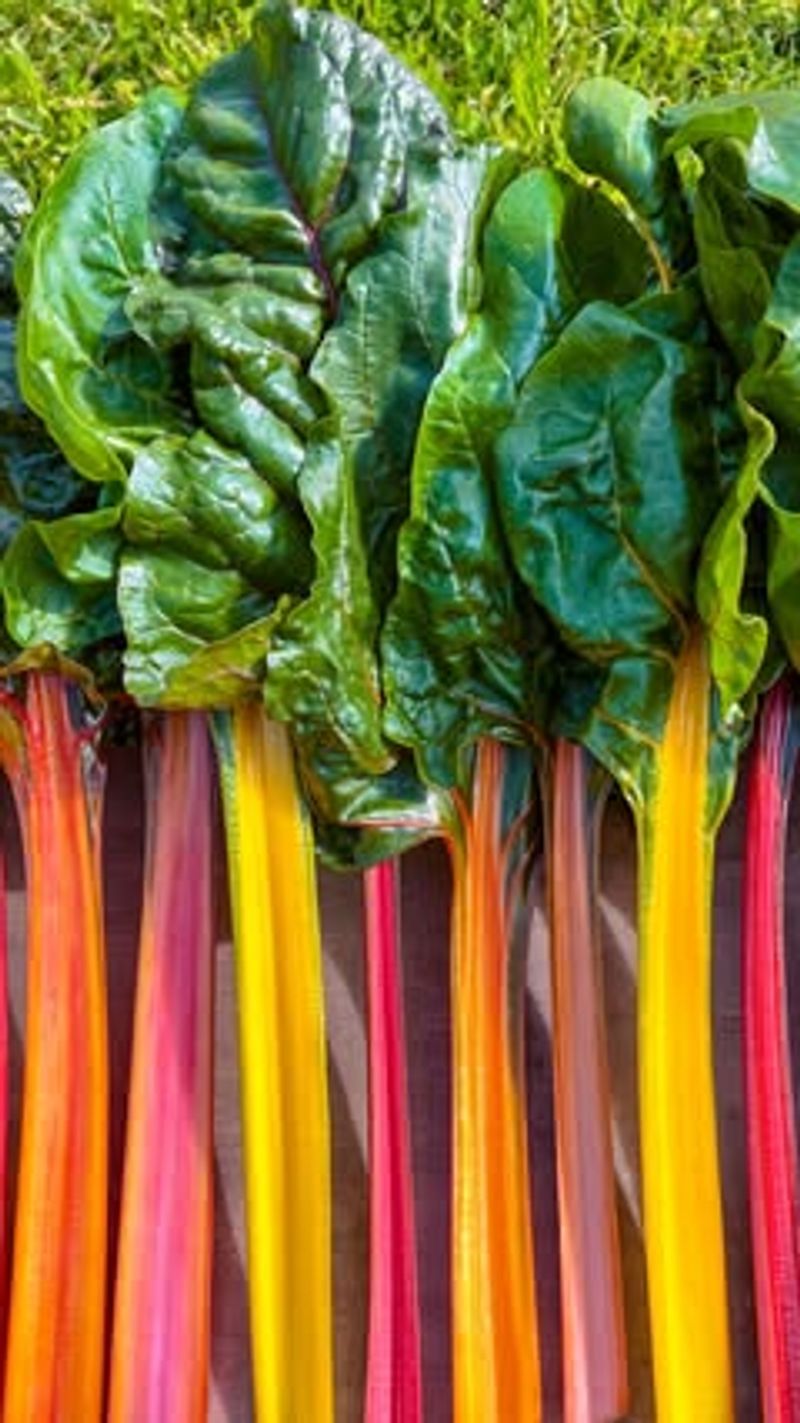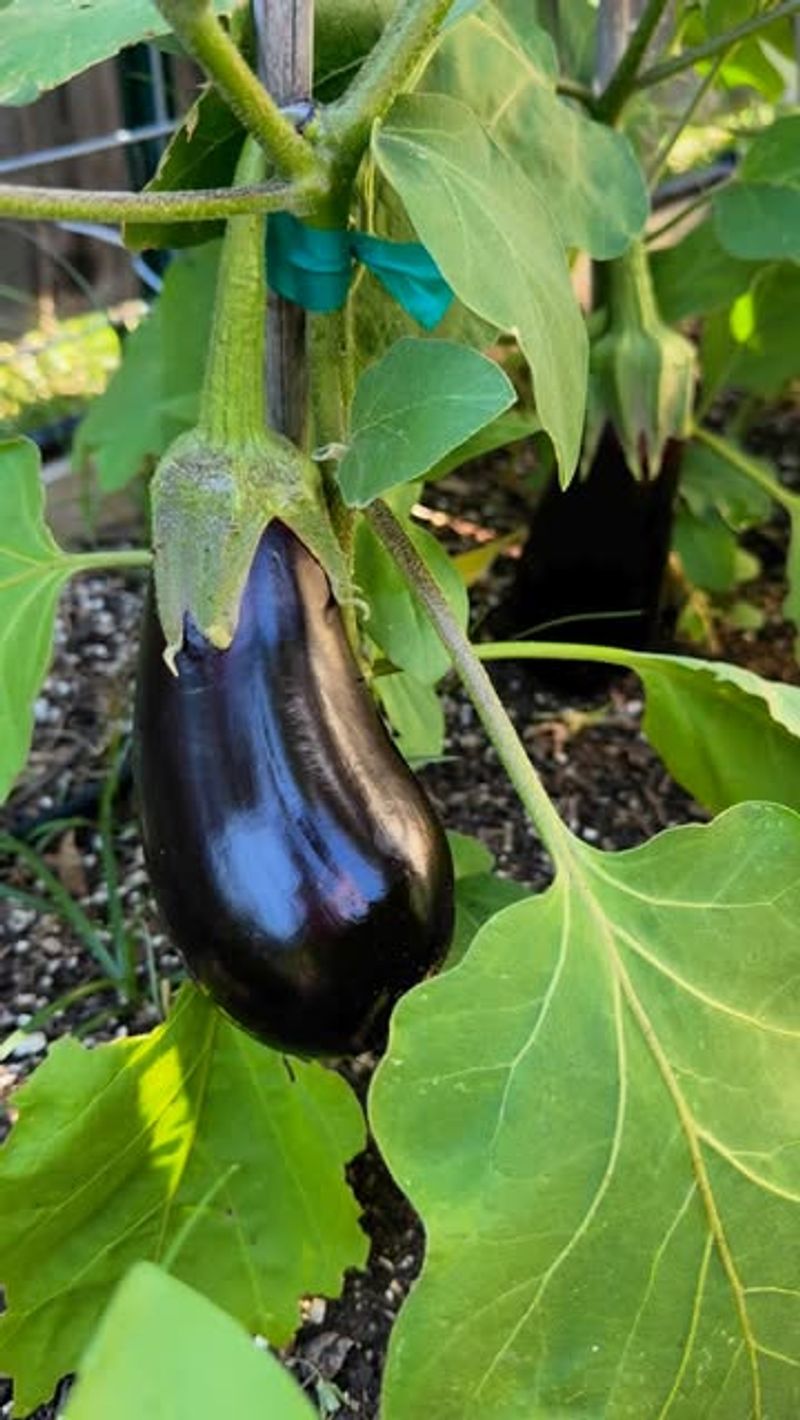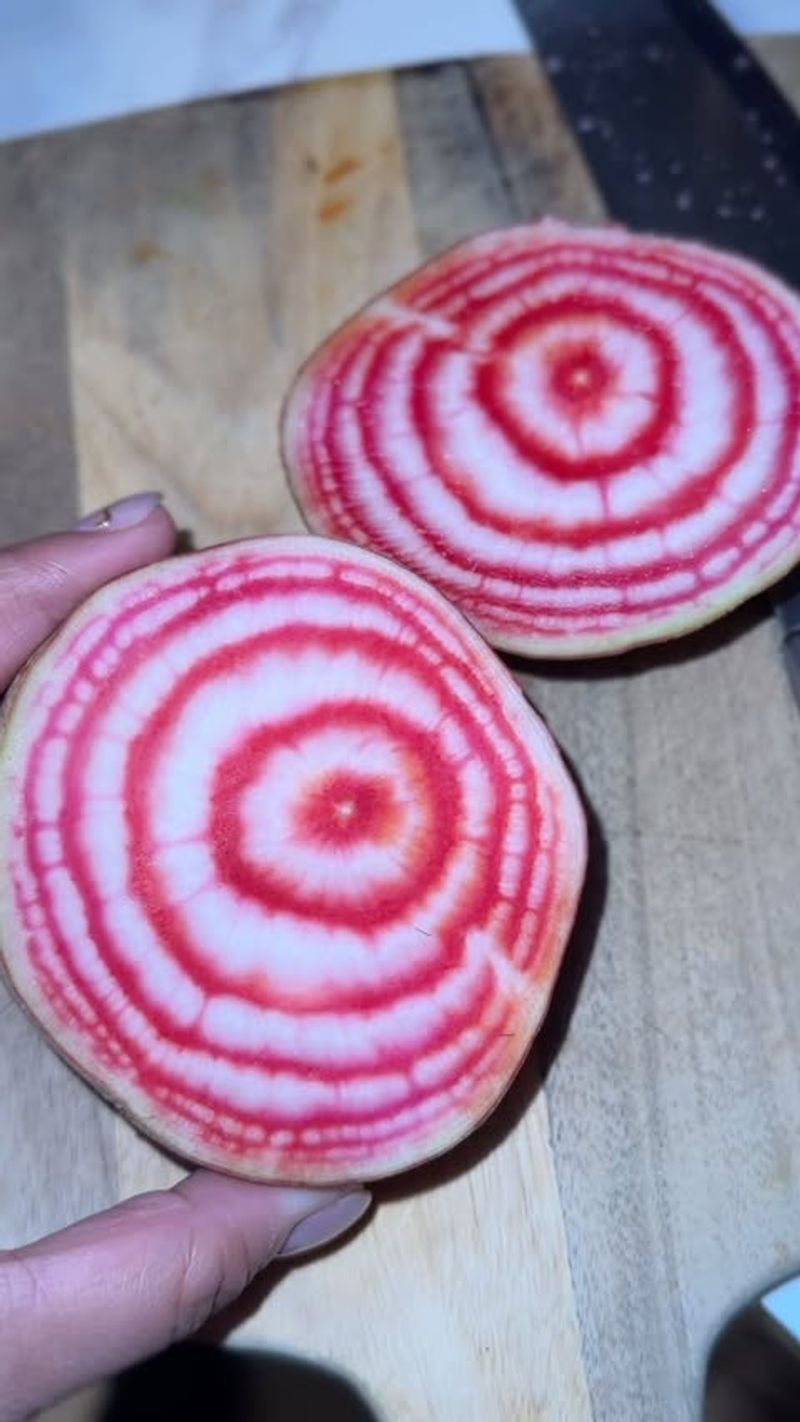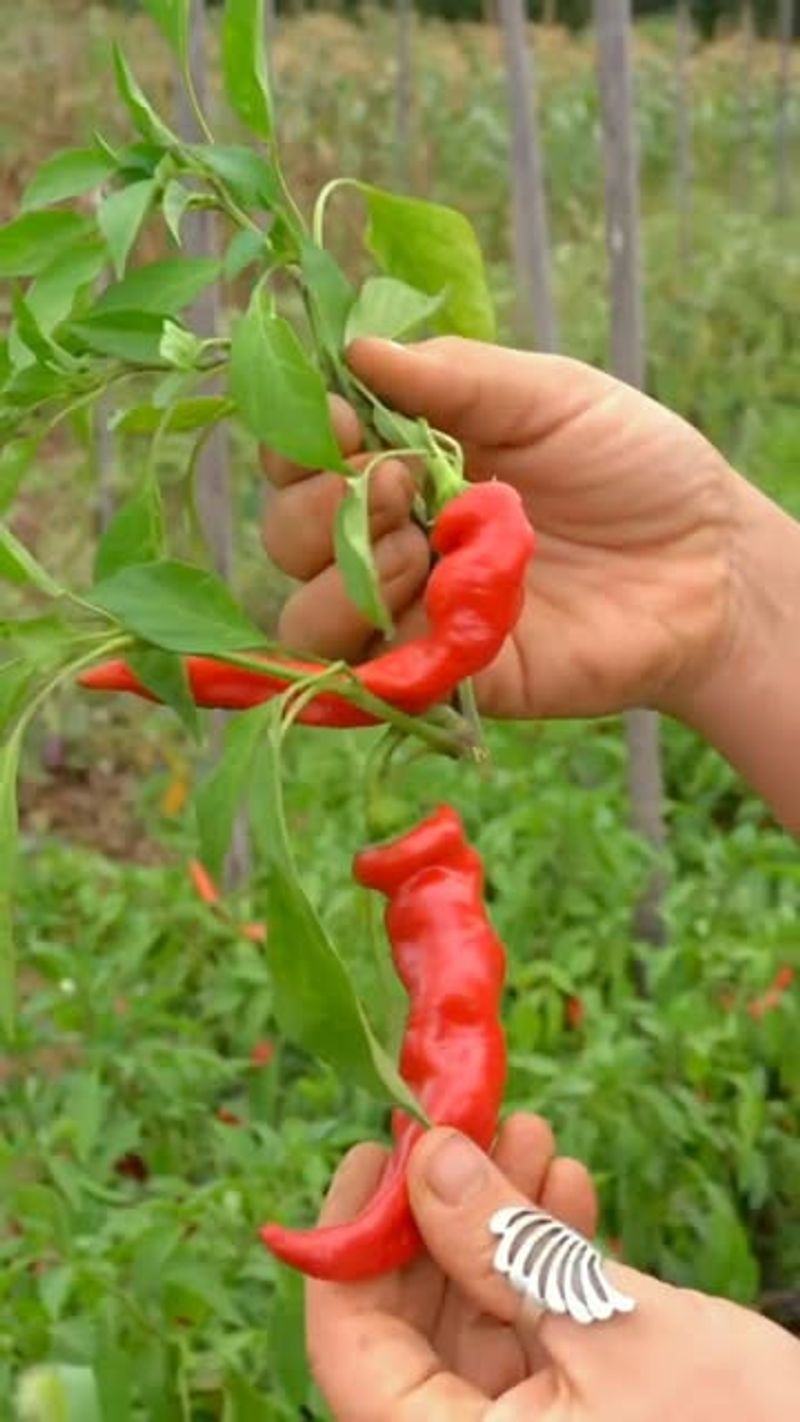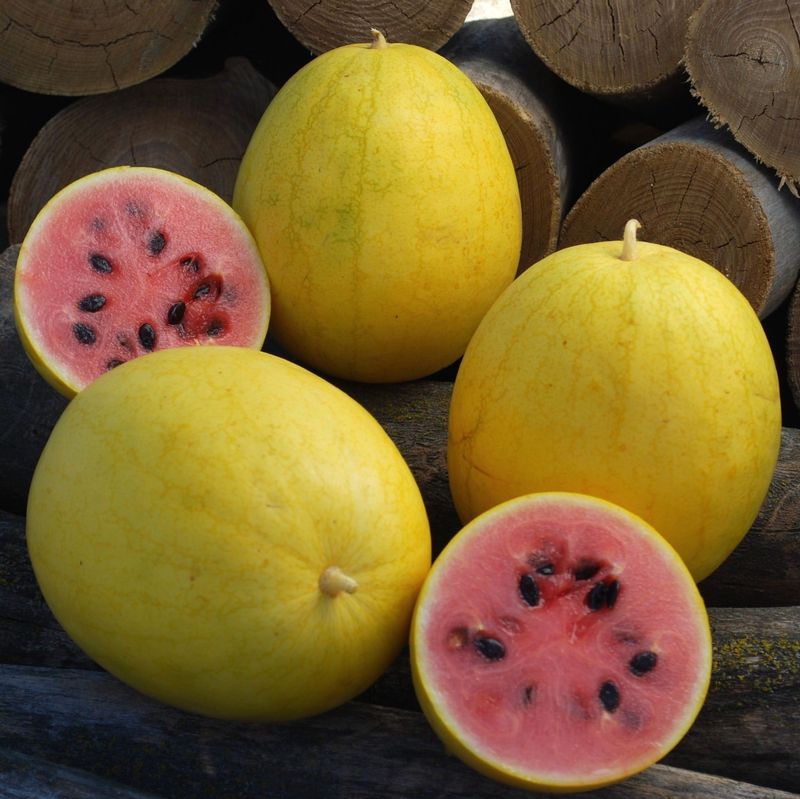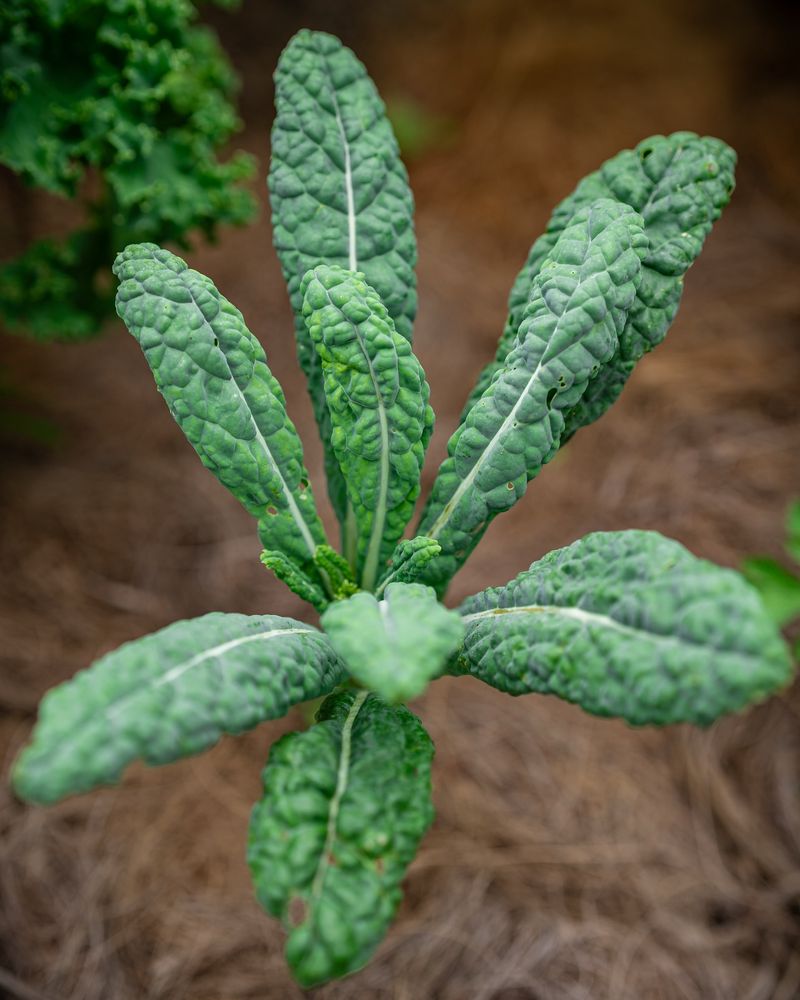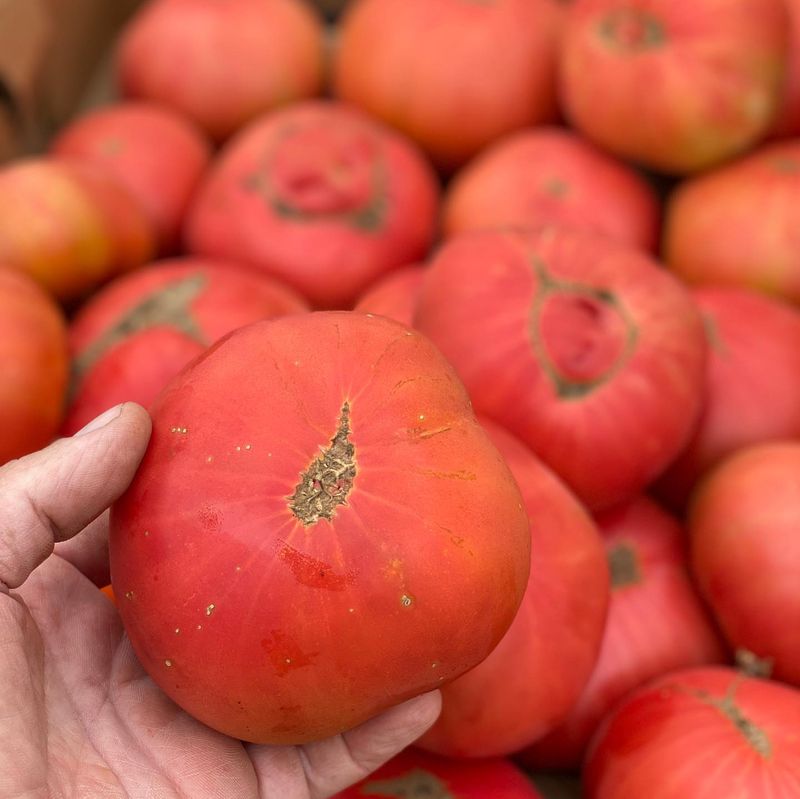Old flavors are making a fresh comeback in California gardens, and heirloom vegetables are stealing the show. With their quirky shapes, vivid colors, and deep-rooted history, these vintage veggies are turning modern plots into time-traveling taste adventures.
From Golden State patios to vineyard beds, gardeners are digging up the past—and planting the kind of character you won’t find in store-bought hybrids. It’s not just a trend; it’s a revival with flavor to spare.
1. Purple Cherokee Tomatoes
Dating back over 100 years, these dusky purple beauties are causing quite a stir in California gardens. Their rich, smoky flavor makes store-bought tomatoes taste like pale imitations.
California gardeners particularly love how these drought-tolerant tomatoes thrive in our Mediterranean climate. Each fruit weighs about a pound, perfect for that epic sandwich or fresh salsa.
Start seeds indoors in February for best results, then transplant after the last frost when soil warms.
2. Moon And Stars Watermelon
Almost lost forever in the 1980s, this spectacular watermelon has made an impressive comeback. The dark green rind decorated with yellow spots resembling a night sky captivates gardeners and dinner guests alike.
Growing up to 40 pounds, these melons need space but reward patience with sweet, ruby-red flesh that tastes like summer itself. Many California gardeners dedicate entire beds to these beauties.
Plant when soil temperatures reach 70°F for best germination.
3. Lazy Housewife Beans
Don’t let the quirky name fool you – these beans earned their title because they were the first stringless variety, saving hours of prep work. Introduced in the 1800s, they’re experiencing a revival in California’s community gardens.
The prolific vines produce tender green pods that mature into white beans perfect for winter soups. Many gardeners appreciate their dual-purpose nature.
Plant directly in the ground after danger of frost has passed, providing a trellis for support.
4. Mortgage Lifter Tomatoes
With a story as rich as their flavor, Mortgage Lifter tomatoes were developed by a mechanic who sold enough plants to pay off his house in the 1940s! Their massive fruits—sometimes weighing over two pounds—make them conversation starters in any garden.
California gardeners love their crack-resistant nature and ability to produce throughout the long growing season. The pink-red beefsteak fruits offer a perfect balance of sweetness and acidity.
Space plants 3-4 feet apart to accommodate their sprawling habit.
5. Lemon Cucumber
Round, yellow, and about the size of a tennis ball, lemon cucumbers are stealing the spotlight in California gardens. Despite their citrus appearance, they taste like mild, sweet cucumbers without bitterness.
Kids particularly enjoy growing these novelty cucumbers, which produce abundantly from summer through fall. Unlike conventional cucumbers, they never need peeling and contain fewer seeds.
For continuous harvest, plant successive crops every few weeks throughout spring and early summer.
6. Dragon Tongue Beans
Flat, cream-colored pods with stunning purple streaks make Dragon Tongue beans both a feast for the eyes and the palate. Originally from the Netherlands, these beans have found a happy home in California’s diverse growing regions.
Harvest them young for tender snap beans or let them mature for shell beans. Their vibrant colors fade when cooked, so many gardeners showcase them in raw salads.
Plant in full sun after soil warms and harvest frequently to encourage continued production.
7. Romanesco Broccoli
Looking like something from another planet, Romanesco’s lime-green spiral florets follow a perfect mathematical sequence called the Fibonacci spiral. This ancient Italian vegetable predates both broccoli and cauliflower.
California coastal gardeners find it thrives in cooler conditions, making it perfect for fall planting. The nutty, delicate flavor wins over even reluctant vegetable eaters.
Start seeds in summer for fall harvest, and provide consistent moisture for best head formation.
8. Rattlesnake Pole Beans
Named for their snake-like purple streaks on green pods, Rattlesnake beans climb vigorously up to 10 feet tall. Their drought tolerance makes them particularly popular in Southern California gardens.
The beans remain tender even at larger sizes, a rare quality that gardeners appreciate. When dried, they transform into beautiful speckled beans for hearty winter dishes.
Plant alongside corn in traditional Three Sisters gardens for natural support and companion planting benefits.
9. Red Warty Thing Squash
Resembling something from a fairy tale, these bright orange-red squashes covered in bumpy warts make stunning autumn decorations before becoming dinner. Victorian gardeners prized them for both ornamental value and sweet, firm flesh.
Growing up to 20 pounds, they need space but reward California gardeners with incredible storage life—often lasting over a year when properly cured! Their rich flavor improves with storage.
Plant in hills after soil warms, allowing 10-foot spacing for these vigorous vines.
10. Five Color Silverbeet Swiss Chard
Bringing a rainbow to vegetable gardens, this Australian heirloom features stems in vibrant shades of red, pink, orange, yellow and white. California gardeners appreciate how it grows year-round in most regions of the state.
Each color contains different antioxidants, making it as nutritious as it is beautiful. The mild flavor works well in everything from smoothies to stir-fries.
Plant seeds directly in garden beds, harvesting outer leaves first to extend the harvest season indefinitely.
11. Black Beauty Eggplant
Developed in 1910, Black Beauty eggplants feature glossy, deep purple skin that seems to absorb sunlight. Their classic teardrop shape represents what most people imagine when thinking of eggplant.
California gardeners in hot inland areas watch these plants thrive through summer heat when other vegetables struggle. Each plant produces 4-6 large fruits at a time throughout the season.
Stake plants early as the heavy fruits can cause stems to break. Harvest when skin is glossy for best flavor.
12. Chioggia Beets
Cut open a Chioggia beet and you’ll find stunning candy-stripe rings that have earned them the nickname ‘bull’s eye beets.’ This Italian heirloom from the 1840s creates instant excitement at farmers’ markets and dinner tables.
Unlike modern beets, they won’t bleed and stain everything red. California gardeners appreciate their sweet flavor and ability to grow in partial shade.
For best color, eat them raw or roast whole, then slice. Early thinnings make delicious microgreens.
13. Jimmy Nardello Sweet Peppers
Brought to America in 1887 by an Italian immigrant, these long, curly red peppers look spicy but deliver surprising sweetness. Their thin walls make them perfect for quick cooking and drying.
California pepper enthusiasts rank them among the sweetest peppers available. The prolific plants produce dozens of 8-10 inch peppers that turn from green to vibrant red when ripe.
Start seeds indoors 8 weeks before last frost, then transplant into warm soil for best results.
14. Golden Midget Watermelon
Perfect for small California gardens, these space-saving watermelons grow to just 3 pounds. Their most magical feature? The rind turns golden yellow when ripe, eliminating the guesswork of harvest timing.
Developed in the 1950s by breeding desert watermelons with early-maturing varieties, they’re ready in just 70 days from planting. The sweet red flesh provides a perfect single-family serving.
Plant in the warmest spot in your garden and reduce watering as fruits develop for sweetest flavor.
15. Dinosaur Kale
Also known as Lacinato or Tuscan kale, this Italian heirloom dates back to the 18th century. The dark blue-green leaves with distinctive bubbled texture remind many gardeners of dinosaur skin.
Sweeter after frost, Dinosaur kale thrives in California’s mild winter gardens when summer crops are finished. Unlike curly kale, its flat leaves make preparation easier and cooking more uniform.
Plant in late summer for fall and winter harvests, picking outer leaves first to extend the productive season.
16. Brandywine Tomatoes
Dating back to 1885, Brandywine tomatoes remain the gold standard for tomato flavor. Their large, slightly flattened pink fruits can weigh up to 2 pounds each!
California tomato connoisseurs praise their perfect balance of sweetness and acidity. Though they produce fewer tomatoes than modern varieties, many gardeners insist the incomparable flavor justifies the lower yield.
Provide strong support for these potato-leaf plants, as the heavy fruits can cause stems to break.

